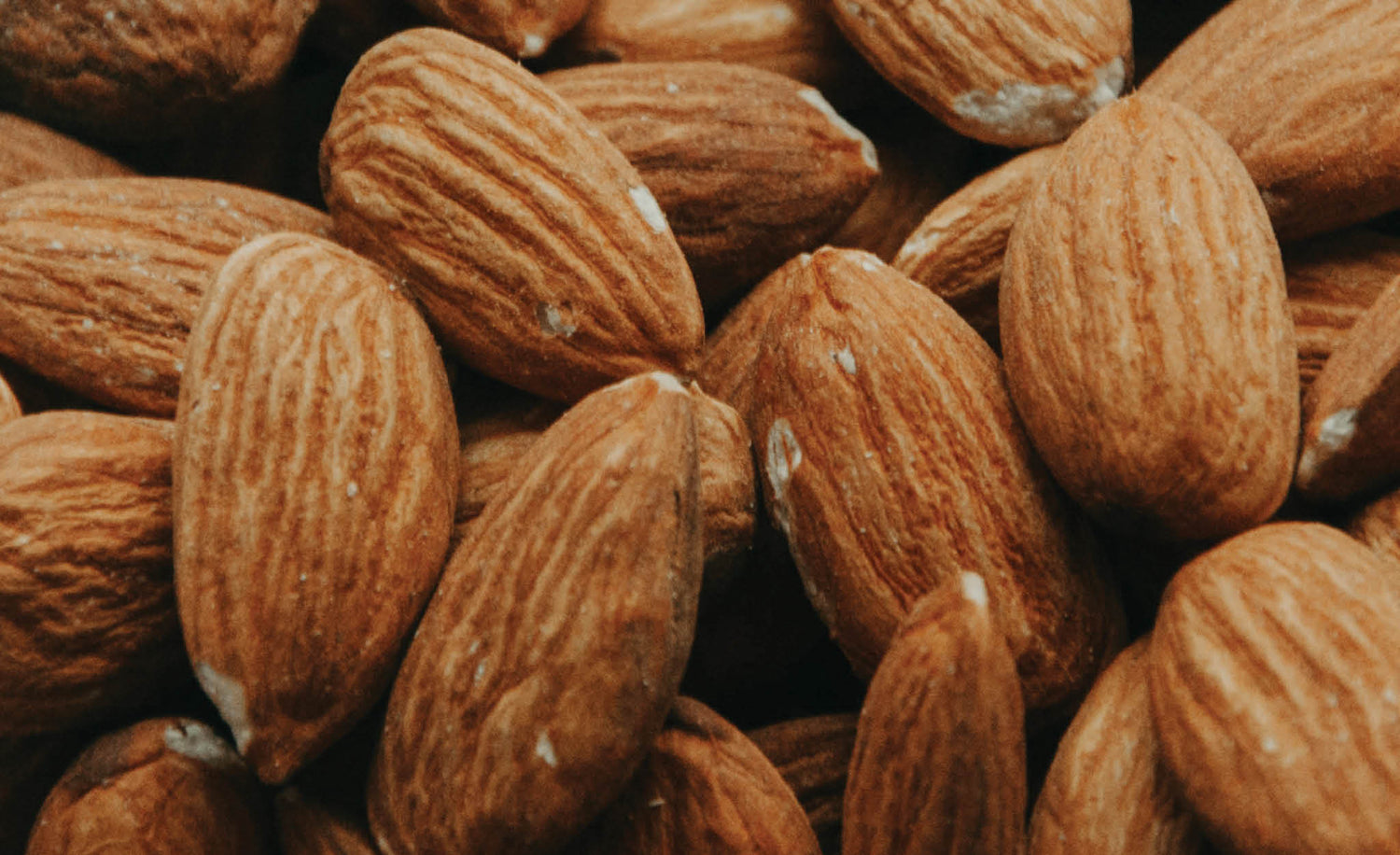The almond as we know it today is a far cry from the almond as it was consumed thousands of years ago. Immerse yourself in the fascinating rags-to-riches story of the almond, from wild to sweet.
Early Days - The Deadly Poison
The earliest traces of almonds found by humans date back thousands of years, 19,000 years to be exact (1). At that time, only wild varieties of almonds were known, as agriculture didn't begin until the Neolithic Revolution, 10,000 BC, for domesticated almonds to be cultivated.
These early wild varieties were...wild, to say the least. Why was that? They were (and still are!) poisonous & bitter and grow in very specific areas (2). Their content of cyanogenic diglucoside amygdalin (cyanide) is fatal to an adult. It would take the consumption of about 50 wild almonds to kill someone, with 6 to 10 to show symptoms of poisoning (3-4).
The Game Changer
So, what changed the deadly wild and bitter almonds into the sweet and harmless almonds we know today? A change in the way they were grown, around 3000 B.C.
Storytellers like to quote a Christian text by St. Basil the Great with a very curious botanical instruction as an example of what changed: ‘‘(...) Thus the pungent pomegranate and the bitter almond, when the trunk of the tree is pierced near the root to introduce a fat plug of pine in the middle of the pith, lose the acidity of their juice and become delicious fruits.’’(5).
What happened? The almond began to be domesticated and cultivated with human intervention. Scientists will confirm that a mutation occurred, and that the sweet and nonpoisonous almond genotype was activated and reproduced (6-7). Bye-bye wild and poisonous type, hello new & improved sweet almonds!
Overcoming Adversity
The moment almonds became sweet, their popularity skyrocketed around the world. But they were not the only ones at the party of healthy and tasty nuts. Walnuts, peanuts, pecans, and cashews were also rising stars.
How did they defend their place as one of the best nuts around? By being one of the best natural sources of many vitamins, minerals, and fiber, while also being extremely tasty.
Almonds are packed with vitamin E, calcium, magnesium, phosphorus, and copper, as well as other bioactive compounds such as flavonoids, phytosterols and phenolic acids (antioxidants) (8). As for its flavor, it can be described as nutty, subtly floral, and earthy. A crunch of nutrients & deliciousness.
The Happy Ending: Everything Almond
Almond extracts, almond butter, almond flour, almond milk... Today you can find everything almond - sweet almonds. Looking back 19,000 years, almonds have evolved from their wild phenotypes into the delicious nuts we know and love today. From rags to riches.
At HOLOS, we couldn't resist getting on the almond bandwagon, so we birthed our Maple + Almonds flavour. The maple taste is predominant, with a sweet and roasted caramel. Slices of decadent almonds add complexity to the flavour, with deep but subtle nut notes. You are in for a double sensory and gustatory adventure that we are sure your palate will enjoy and crave. You can try this flavour today, in one of our bundles.

(1) Kislev, M. E., Nadel, D., & Carmi, I. (1992). Epipalaeolithic (19,000 BP) cereal and fruit diet at Ohalo II, Sea of Galilee, Israel. Review of palaeobotany and palynology, 73(1-4), 161-166.
(2) Ladizinsky, G. (1999). On the origin of almond. Genetic Resources and Crop Evolution, 46, 143-147.
(3) Thodberg, S., Del Cueto, J., Mazzeo, R., Pavan, S., Lotti, C., Dicenta, F., ... & Sánchez-Pérez, R. (2018). Elucidation of the amygdalin pathway reveals the metabolic basis of bitter and sweet almonds (Prunus dulcis). Plant physiology, 178(3), 1096-1111.
(4) Sanchez-Verlaan, P., Geeraerts, T., Buys, S., Riu-Poulenc, B., Cabot, C., Fourcade, O., ... & Genestal, M. (2011). An unusual cause of severe lactic acidosis: cyanide poisoning after bitter almond ingestion. Intensive Care Medicine, 37, 168-169.
(5) Jackson, B. (1895). The treatise de spiritu sancto. Рипол Классик.
(6) Sánchez-Pérez, R., Pavan, S., Mazzeo, R., Moldovan, C., Aiese Cigliano, R., Del Cueto, J., ... & Møller, B. L. (2019). Mutation of a bHLH transcription factor allowed almond domestication. Science, 364(6445), 1095-1098.
(7) Delplancke, M., Alvarez, N., Benoit, L., Espíndola, A. H. I. J., I Joly, H., Neuenschwander, S., & Arrigo, N. (2013). Evolutionary history of almond tree domestication in the Mediterranean basin. Molecular ecology, 22(4), 1092-1104.
(8) Harvard TH CHAN (N.D), Almonds, available here: https://www.hsph.harvard.edu/nutritionsource/food-features/almonds/



